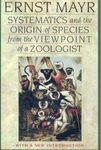By: Frans BM de Waal(Editor), Pier Francesco Ferrari(Editor)
392 pages, 39 b/w photos, 19 b/w illustrations, 4 tables
![The Primate Mind The Primate Mind]()
Click to have a closer look
About this book
Contents
Customer reviews
Biography
Related titles
About this book
Monkey see, monkey do may sound simple, but how an individual perceives and processes the behavior of another is one of the most complex and fascinating questions related to the social life of humans and other primates. In The Primate Mind, experts from around the world take a bottom-up approach to primate social behavior by investigating how the primate mind connects with other minds and exploring the shared neurological basis for imitation, joint action, cooperative behavior, and empathy.
In the past, there has been a tendency to ask all-or-nothing questions, such as whether primates possess a theory of mind, have self-awareness, or have culture. A bottom-up approach asks, rather, what are the underlying cognitive processes of such capacities, some of which may be rather basic and widespread. Prominent neuroscientists, psychologists, ethologists, and primatologists use methods ranging from developmental psychology to neurophysiology and neuroimaging to explore these evolutionary foundations.
A good example is mirror neurons, first discovered in monkeys but also assumed to be present in humans, that enable a fusing between one's own motor system and the perceived actions of others. This allows individuals to read body language and respond to the emotions of others, interpret their actions and intentions, synchronize and coordinate activities, anticipate the behavior of others, and learn from them. The remarkable social sophistication of primates rests on these basic processes, which are extensively discussed in the pages of this volume.
Contents
Preface [Frans B.M. de Waal and Pier Francesco Ferrari]
1. A Bottom-Up Approach to the Primate Mind [Frans B.M. de Waal and Pier Francesco Ferrari]
Section One: From Understanding of the Actions of Others to Culture
2. The Mirror Neuron System in Monkeys and Its Implications for Social Cognitive Functions [Pier Francesco Ferrari and Leonardo Fogassi]
3. The Human Mirror Neuron System and Its Role in Imitation and Empathy [Marco Iacoboni]
4. Social Rules and Body Scheme [Naotaka Fujii and Atsushi Iriki]
5. What, Whom, and How: Selectivity in Social Learning [Ludwig Huber]
6. Learning How to Forage: Socially Biased Individual Learning and "Niche Construction" in Wild Capuchin Monkeys [Elisabetta Visalberghi and Dorothy Fragaszy]
7. Social Learning and Culture in Child and Chimpanzee [Lydia M. Hopper, Sarah Marshall-Pescini, and Andrew Whiten]
Section Two: Empathy, Perspective Taking, and Cooperation
8. A Bottom-Up View of Empathy [Frans B.M. de Waal]
9. What Does the Primate Mind Know about Other Minds? A Review of Primates' Understanding of Visual Attention [April M. Ruiz and Laurie R. Santos]
10. Human Empathy through the Lens of Psychology and Social Neuroscience [Tania Singer and Grit Hein]
11. How Much of Our Cooperative Behavior Is Human? [Brian Hare and Jingzhi Tan]
12. Fetal Testosterone in Mind: Human Sex Differences and Autism [Bonnie Auyeung and Simon Baron-Cohen]
Section Three: Memory, Emotions, and Communication
13. The Role of Broca's Area in Socio-Communicative Processes of Chimpanzees [William D. Hopkins and Jared P. Taglialatela]
14. Emotional Engagement: How Chimpanzee Minds Develop [Kim A. Bard]
15. Distress Alleviation in Monkeys and Apes: A Window into the Primate Mind? [Filippo Aureli and Orlaith N. Fraser]
16. Enquiries Concerning Chimpanzee Understanding [Charles R. Menzel and Emil W. Menzel, Jr.]
17. What Is Uniquely Human? A View from Comparative Cognitive Development in Humans and Chimpanzees [Tetsuro Matsuzawa]
References
Contributors
Index
Customer Reviews
Biography
Frans B. M. de Waal is C. H. Candler Professor of Primate Behavior in the Psychology Department and Director of Living Links, part of the Yerkes Primate Center, Emory University.
Pier Francesco Ferrari is Assistant Professor in Biology at the School of Medicine at the Univerista di Parma, Italy.
By: Frans BM de Waal(Editor), Pier Francesco Ferrari(Editor)
392 pages, 39 b/w photos, 19 b/w illustrations, 4 tables



































